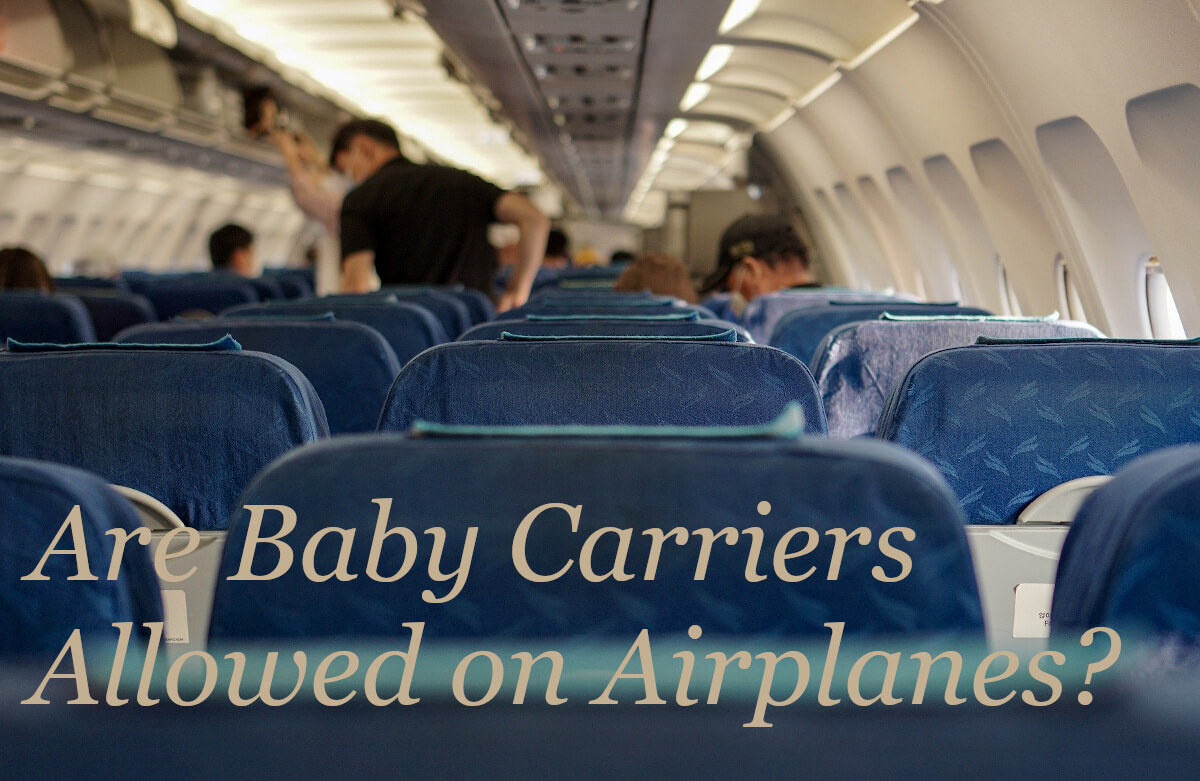Wraps, slings, and other baby carriers can be a lifesaver when traveling with baby. When handling baggage and tickets and dealing with older children, it really helps to have free hands, since your child is nestled snug against you in a baby carrier. But did you know that you might be asked to remove your baby from the carrier once you’re on the plane?
That’s exactly what happened to Nicki Gazlay when she took a Frontier Airlines flight from Denver to Memphis. She reportedly removed her five-month-old son from her Ergo as the flight attendant requested, but she and the flight attendant exchanged words. Ms. Gazlay reportedly told the flight attendant that she wasn’t asked to remove her son from the carrier on a previous connecting flight. The confrontation escalated until Ms. Gazlay said, “Of course I am going to comply, I’m going to do whatever you say because you are the queen of this airplane.” The flight attendant responded by removing Ms. Gazlay and her son from the flight.
No products found.
The airline has released a statement that says they require all passengers to comply with FAA safety regulations and crew member instructions. If you had a sleeping baby in a baby carrier, would you want to comply with a flight attendant’s request to remove your baby for takeoff and landing?
If you’re traveling without buying a separate seat for your baby (known as flying with a “lap baby”), it might seem safer to keep them in a baby carrier, rather than loose on your lap. However, it’s important to factor in the high speeds and g-forces. During takeoff and landing, and especially during an incident, having your child strapped to your body in a baby carrier can actually hurt them. Your adult-sized body can end up smashing into your baby’s body. When worn in a carrier properly, you should be able to kiss the top of baby’s head. During the force of turbulence or an incident, your head could be thrown forward, causing your chin to hit baby’s head forcefully.
No products found.
There’s another thing to consider — would your baby carrier even hold up to that kind of force? Odds are the carrier would rip off of you. That’s no safer than just holding baby in your lap. One study tested a Baby Bjorn carrier loaded with a forward-facing 20 pound crash test dummy. In a simulated crash at just 21 miles per hour, the carrier ripped apart. Under the g-forces of the crash, the 20-pound baby became 180 pounds, far more than the carrier could hold. Keep in mind that the forces involved in a 21-mile-per-hour car crash are significantly less than those involved if something goes wrong when a plane is taking off or landing, if there’s bad turbulence, or if there’s some other kind of incident during the flight.
The FAA requires babies to be removed from carriers during takeoff and landing. (Technically, the baby can stay in a baby carrier, but the carrier must not be attached to the parent’s body.) The FAA and flight attendants want you and your baby to be safe. Even though babies are allowed to fly on a parent’s lap, the only way for a baby to truly be safe on a flight is strapped into an FAA-approved car seat that is secured to an airplane seat.
No products found.

